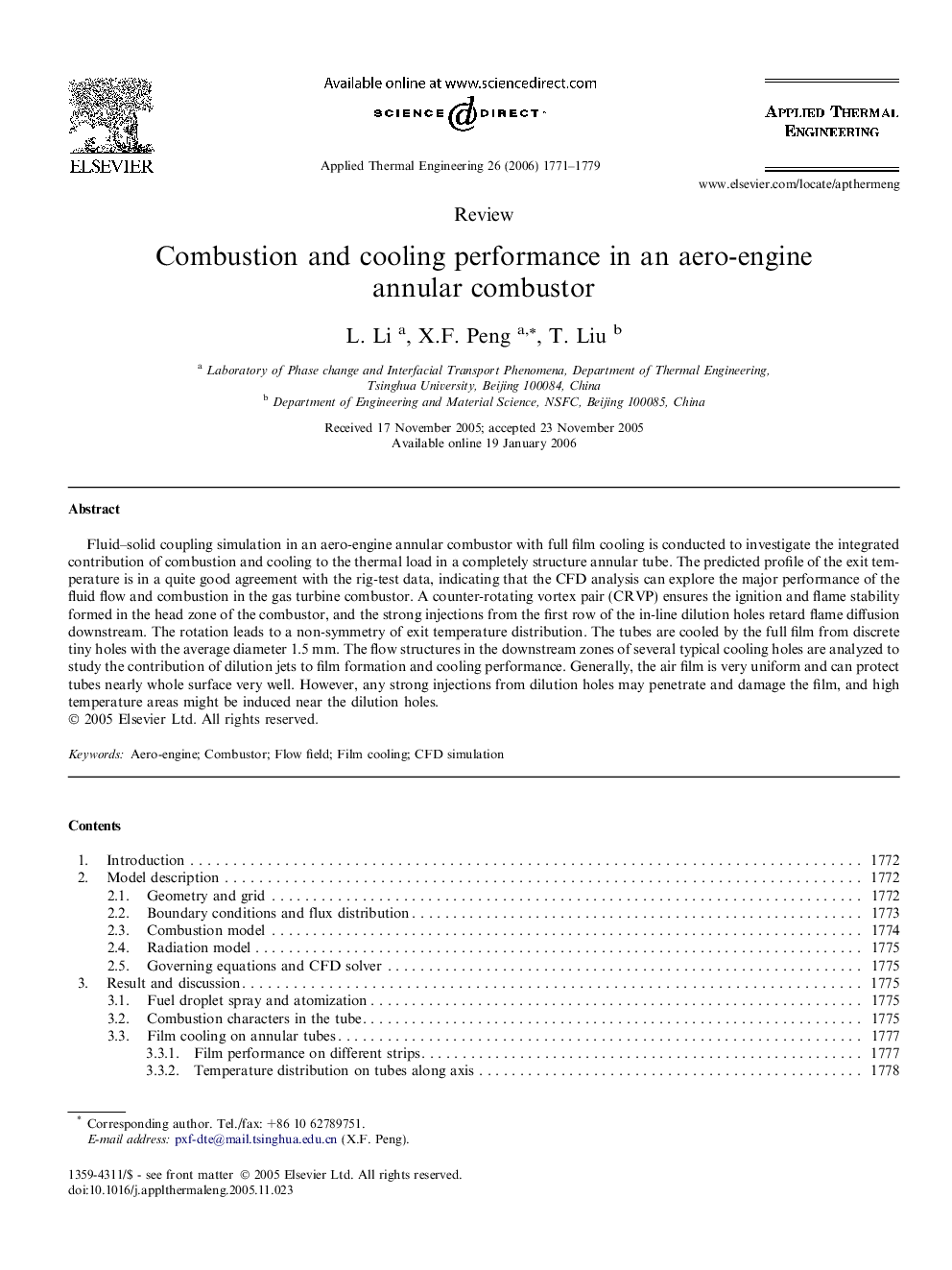| Article ID | Journal | Published Year | Pages | File Type |
|---|---|---|---|---|
| 649540 | Applied Thermal Engineering | 2006 | 9 Pages |
Fluid–solid coupling simulation in an aero-engine annular combustor with full film cooling is conducted to investigate the integrated contribution of combustion and cooling to the thermal load in a completely structure annular tube. The predicted profile of the exit temperature is in a quite good agreement with the rig-test data, indicating that the CFD analysis can explore the major performance of the fluid flow and combustion in the gas turbine combustor. A counter-rotating vortex pair (CRVP) ensures the ignition and flame stability formed in the head zone of the combustor, and the strong injections from the first row of the in-line dilution holes retard flame diffusion downstream. The rotation leads to a non-symmetry of exit temperature distribution. The tubes are cooled by the full film from discrete tiny holes with the average diameter 1.5 mm. The flow structures in the downstream zones of several typical cooling holes are analyzed to study the contribution of dilution jets to film formation and cooling performance. Generally, the air film is very uniform and can protect tubes nearly whole surface very well. However, any strong injections from dilution holes may penetrate and damage the film, and high temperature areas might be induced near the dilution holes.
